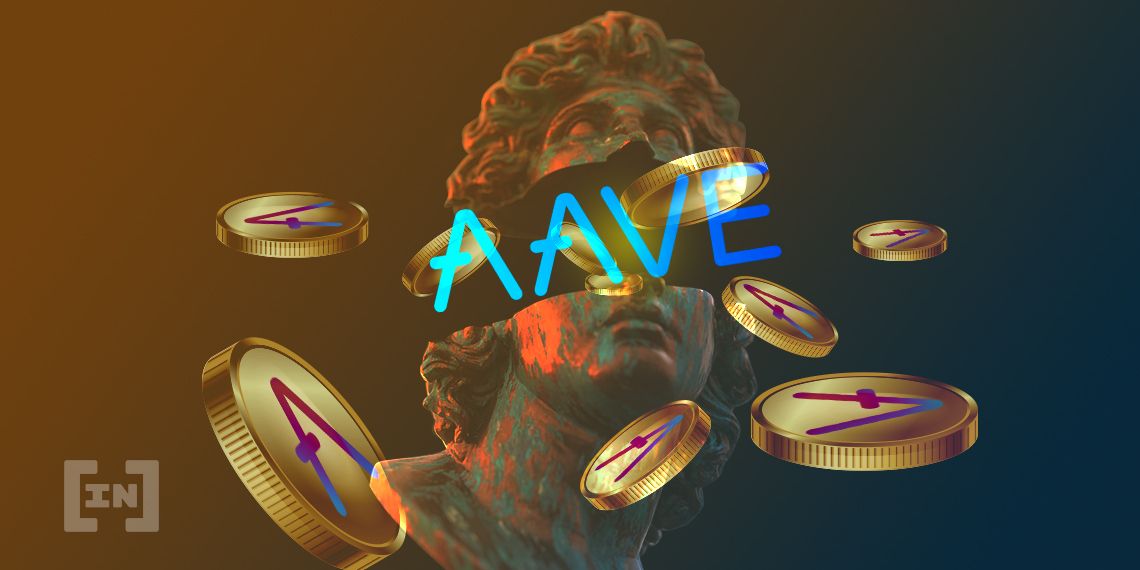Aave has revealed plans to launch a U.S. dollar-pegged stablecoin called GHO, part of an effort to expand revenue and make borrowing on the DeFi protocol “more competitive.”
GHO will be backed by a range of cryptocurrency assets posted as collateral by borrowers on the platform, according to a proposal by Aave Companies, the firm behind Aave.
The proposal to Aave’s governance forum said users would be able to mint the stablecoin using assets they provided as collateral. The same assets would continue to earn interest while being used as collateral.
AAVE, the governance and utility token of the Aave protocol, surged on the news and rose 11% to $70. The token has slumped more than 65% year-to-date, and is 90% off its all-time high of $661 reached in May last year, as per CoinGecko data.
“While GHO would be secured by the assets on the Ethereum market, the main vision for GHO is to pursue organic adoption via L2s to solve real life payment opportunities across the internet and on-ground,” Aave founder, Stani Kulechov, wrote on Twitter.
Kulechov said the development of the GHO stablecoin has been completed and the first audit will take place on July 11. He added that the proposal, now up for discussion, would have to be approved by the Aave community in a snapshot vote.
GHO to boost Aave revenue, says CEO
Aave is a prominent decentralized finance (DeFi) lending and borrowing protocol boasting more than $5.59 billion in total value locked – the sum of assets managed by the protocol – according to data complied by DefiLlama.
That figure is down over 50% since early May, when the Terra blockchain debacle began to unravel.
According to the Aave Companies proposal, GHO will be a decentralized stablecoin on the Ethereum (ETH) mainnet. It will be overcollateralized by assets that continue to earn yield.
GHO is native to the Aave ecosystem, and users who intend to borrow the stablecoin must supply collateral at a specific ratio to mint it. When a user repays their debt or gets liquidated, the user’s GHO tokens will be burned by the protocol.
“All the interest payments accrued by minters of GHO would be directly transferred to the AaveDAO treasury; rather than the standard reserve factor collected when users borrow other assets,” said the proposal.
Aave also introduced a concept it called “facilitators”, which allows a protocol or any other entity to generate or burn GHO tokens trustlessly. Interest rates for borrowing GHO will be determined by the AaveDAO based on market conditions.
Stani Kulechov said the facilitator strategy means that “new use-cases can be added to mint GHO, such as minting against cross-chain assets…”
He expects that as people mint GHO through Aave and other facilitators, the protocol will “receive a substantial amount of revenue in the form of fees.”
How will GHO maintain dollar peg?
Stablecoins have come under increased scrutiny following the collapse of Terra’s UST stablecoin in May. It was little surprise when one user on the Aave governance forum asked: “What sort of arbitrage exists to maintain GHO peg? Who makes money on the arbitrage?”
In response, Marc Zeller, integrations lead at Aave, explained:
“If GHO is above peg for any reason, it’s profitable to mint GHO with for example another stablecoin and ‘short it’ on stableswaps and earn slippage. If GHO is ‘under peg’- it is profitable to pay back debt. Allowing GHO total supply to go down as debt repaid is GHO burnt as helping peg to be restored.”
He added that “this kind of mechanism proved its resilience with other actors of the ecosystem since years.”
Sam Kazemian, founder of Frax Finance, issuer of the fractionally-collateralized stablecoin FRAX, showed immediate support for Aave’s planned stablecoin.
He said “would love to support” GHO with Frax’s liquidity pools on Curve to “incentivize deep liquidity for GHO on launch”.
Disclaimer
In adherence to the Trust Project guidelines, BeInCrypto is committed to unbiased, transparent reporting. This news article aims to provide accurate, timely information. However, readers are advised to verify facts independently and consult with a professional before making any decisions based on this content. Please note that our Terms and Conditions, Privacy Policy, and Disclaimers have been updated.

